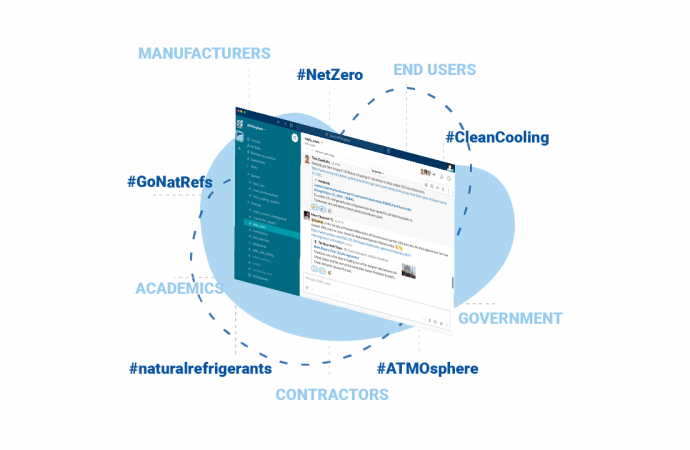Coca-Cola, the world’s largest beverage company, has a long history of using carbon dioxide as the fizz in its soft drinks. Now CO2 is also Coke’s refrigerant of choice in its beverage coolers, vending machines and fountain equipment. At ATMOsphere America 2015 Coke presented on a light-commercial refrigeration panel on their journey to achieve HFC-free status for all new cooling equipment. On the same panel, four of Coke’s CO2 equipment suppliers describe

“We are reaching an inflection point in our HFC-free global system adoption,” said Antoine Azar, global program director for the Coca-Cola Company and chair of Refrigerants, Naturally!, a consortium of packaged goods companies advocating the replacement of HFC refrigerants. “We are at the phase where [CO2] is the technology that fits our portfolio of equipment.”
Coke has installed 1.48 million HFC-free units as of quarter 1, 2015, an 80% improvement over Q1, 2014. While most of those units use CO2, some equipment in Europe and Turkey still employ hydrocarbons as a refrigerant while transitioning to CO2.
I am confident that CO2 is the future, for our applications at least,” said Azar.
Coke overcomes equipment costs and training hurdles
The beverage giant has aimed at being HFC-free by the end of 2015 in all new cooling equipment. Currently, about 4% of Coke’s equipment portfolio lacks a CO2 solution, though the company is working on closing that gap, Azar noted.
Azar acknowledged Coke’s status as one of the few users of standalone foodservice equipment choosing CO2 rather than hydrocarbons. But he attributed that to “misperceptions” about CO2, and pointed out that centralised CO2 technology is catching on in the supermarket industry, and even some foodservice companies are approaching Coke’s suppliers about CO2. He also stated that of the 244 certified CO2 models, 40% are certified for “harsh ambient conditions,” including Brazil, Mexico, North Africa and China and that 75% of the CO2 models are more energy efficient than comparable R134a equipment.
While training and servicing often emerge as impediments to CO2 system adoption, Azar emphasized that Coke is not facing any major issues in regard to servicing its CO2 equipment. That’s because its bottlers and third-party servicing companies receive “deep dive training” by equipment manufacturers, which make training material and tools available.
While equipment cost is no longer an obstacle to Coke’s CO2 plans, there remain other obstacles to Coke’s quest to have only CO2 cooling equipment. One is the complexity of its portfolio. Azar presented a graph showing that 38 coolers represent about half of the company’s equipment; the other 50% comprises “hundreds of others,” including HFC-free and R134a units.
SandenVendo supplies CO2 vending machines in U.S.
Dallas-based SandenVendo America, a subsidiary of Sanden, has deployed 1,200 CO2 vending machines in the U.S. to date, mostly for Coke, said Mike Weisser, Vice President of Sales and Marketing, SandenVendo America. In Japan, the company has supplied thousands of CO2 vending units. At ATMOsphere America, SandenVendo completed two orders for about 450 machines for companies in Brazil and Peru, he added.
Peru and Brazil are not thought of as good climates for CO2 refrigeration, but that’s not true, said Weisser. “They perform exceptionally well in these warmer climates up to 104°F.”
The energy consumption of SandeVendo’s CO2 and R134a machines are currently about the same, with the former costing about 5% more than the latter, he noted.
In the near future, SandenVendo expects to deploy remote CO2 condensing units in small retail formats like convenience stores in the U.S. “There’s a big opportunity for natural refrigerants, particularly CO2, to play a role in this market,” said Weisser. The company has already installed 70 such systems in 7-Eleven stores in Japan.
SANDEN sees CO2 as best choice
Sanden Environmental Products Corp., another subsidiary of Sanden that makes compressors and other components, regards CO2 as “the most flexible requirement” from low-temperature to high-temperature applications, and the “best choice,” said Junya (Joe) Ichikawa president of the company.
Ichikawa presented data from Energy Star showing CO2 to be more efficient than R134a across many cabinet volumes. He also pointed out that compared to R134a, CO2 has a lower pressure drop, higher heat transfer efficiency at the evaporator and better evaporating latent heat.
The 70 CO2 systems installed in Japanese 7-Eleven stores have an average energy savings of 23% compared to up-to-date R404A systems, Ichikawa said. “We expect a double or triple the demand for these systems this year.” He also foresees its hermetic CO2 compressor production volume to grow from one million in 2014 to 10 million in the coming years,
ISA’s growing CO2 business
Another Coke supplier represented on the panel was ISA, an Italian manufacturer of customised ice cream cabinets, pastry displays, and chilled display cases of various configurations as well as beverage cabinets.
ISA’s CO2 models include “blitz cassette units” and “Panda multideck units for supermarkets featuring “plug-in CO2.” The advantages of the plug-in CO2 equipment, which has so far been deployed in Europe over the past two years, includes low-cost installation and maintenance, flexibility in layout and scalability.
Compared to hydrocarbon installation, ISA’s CO2 share has almost doubled in the past two years for Coke and its retail customers.
Imbera experiences evolution of CO2 technology
Imbera, a division of Mexico-based Femsa, the largest Coke bottler in the world, has the largest number of CO2 refrigerators in the Coca-Cola system worldwide.
We have more than 100,000 CO2 units in the field and we have a very good knowledge of the technology,” said Andres Martinez-Negrete, technology and product development director for Imbera.
All of its CO2 models meet Energy Star 3.0 (October 2014) energy usage requirements, he said. In its flagship model, Imbera reduced energy consumption by 67% from 2009 to 2014. “Our CO2 line is ready for DOE (U.S. Department of Energy) 2017 requirements.”
While its CO2 equipment originally came with a “big upcharge” compared to conventional models, since 2009, the price gap between CO2 and R134a has dropped from 35% to 5%.
He acknowledged that with 10 times the pressure, vibration had become an issue for Imbera’s units. However, “we now have some coolers that have less decibels compared with R134a counterparts,” he said.
There are other hurdles. With more customers pushing the adoption of naturals forward, Martinez-Negrete believes they would find more efficiencies.
In addition, there is still not as much variety in CO2 components like compressors compared with other refrigerants. That makes meeting the DOE’s 2017 efficiency requirements challenging in some cases.
MORE INFORMATION
Related stories



